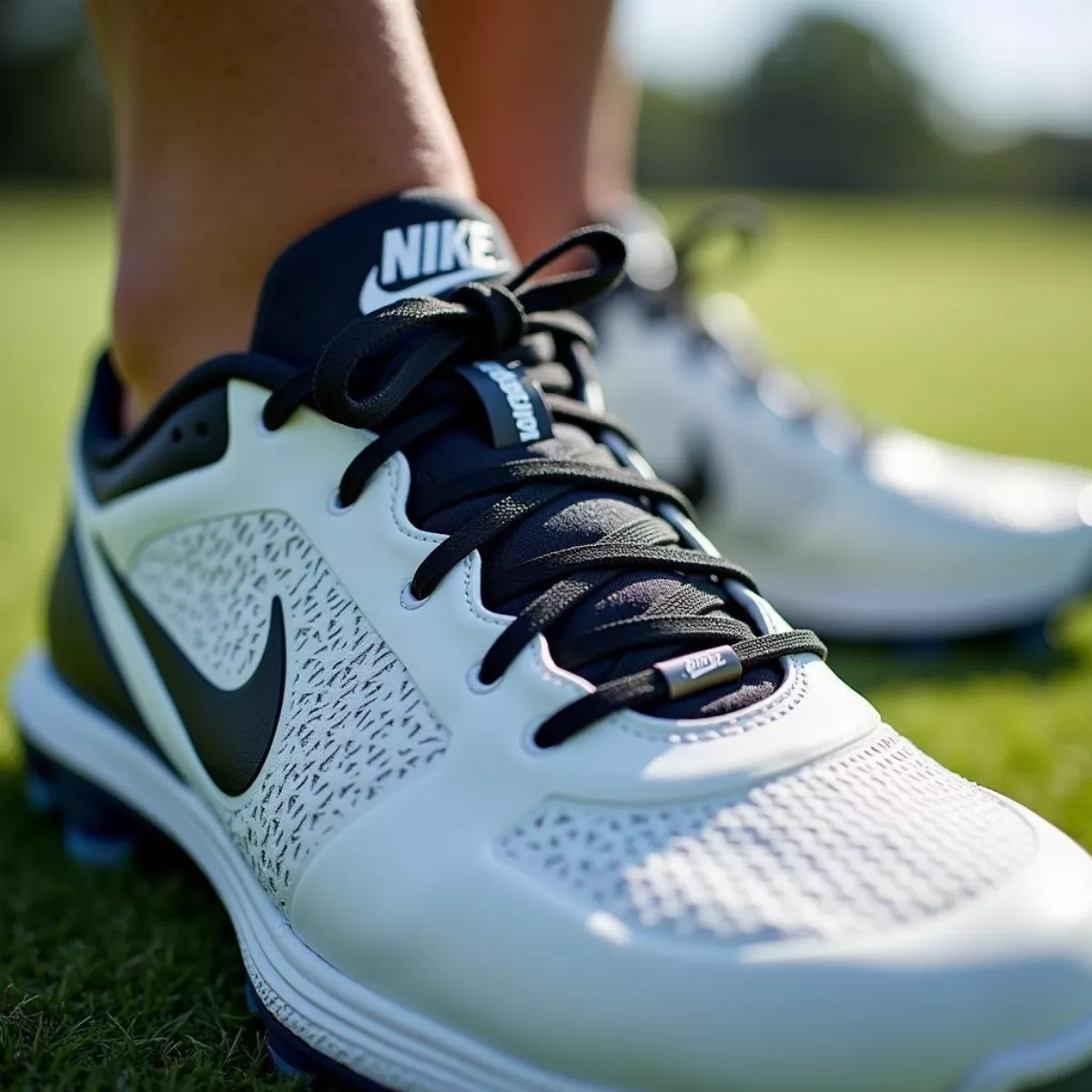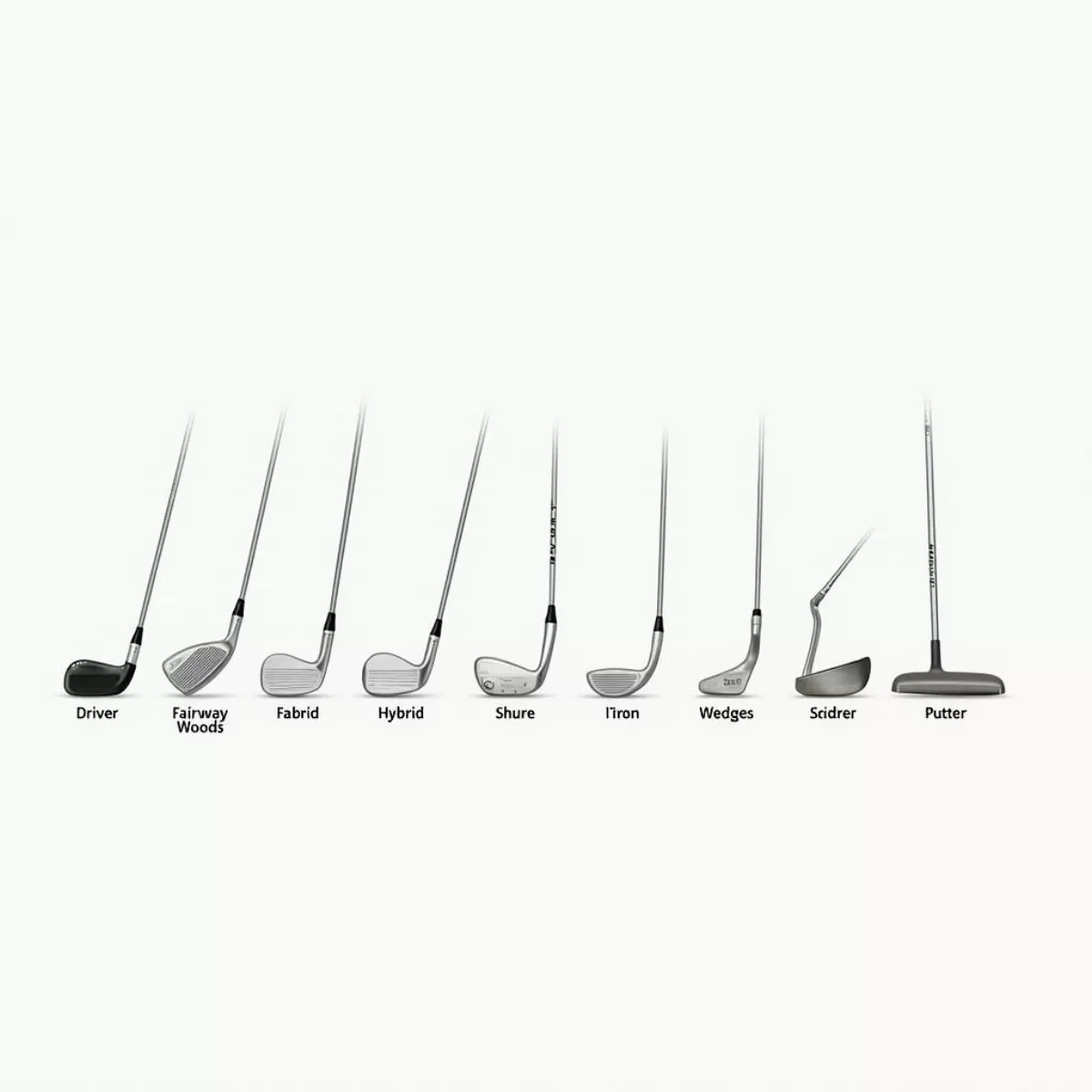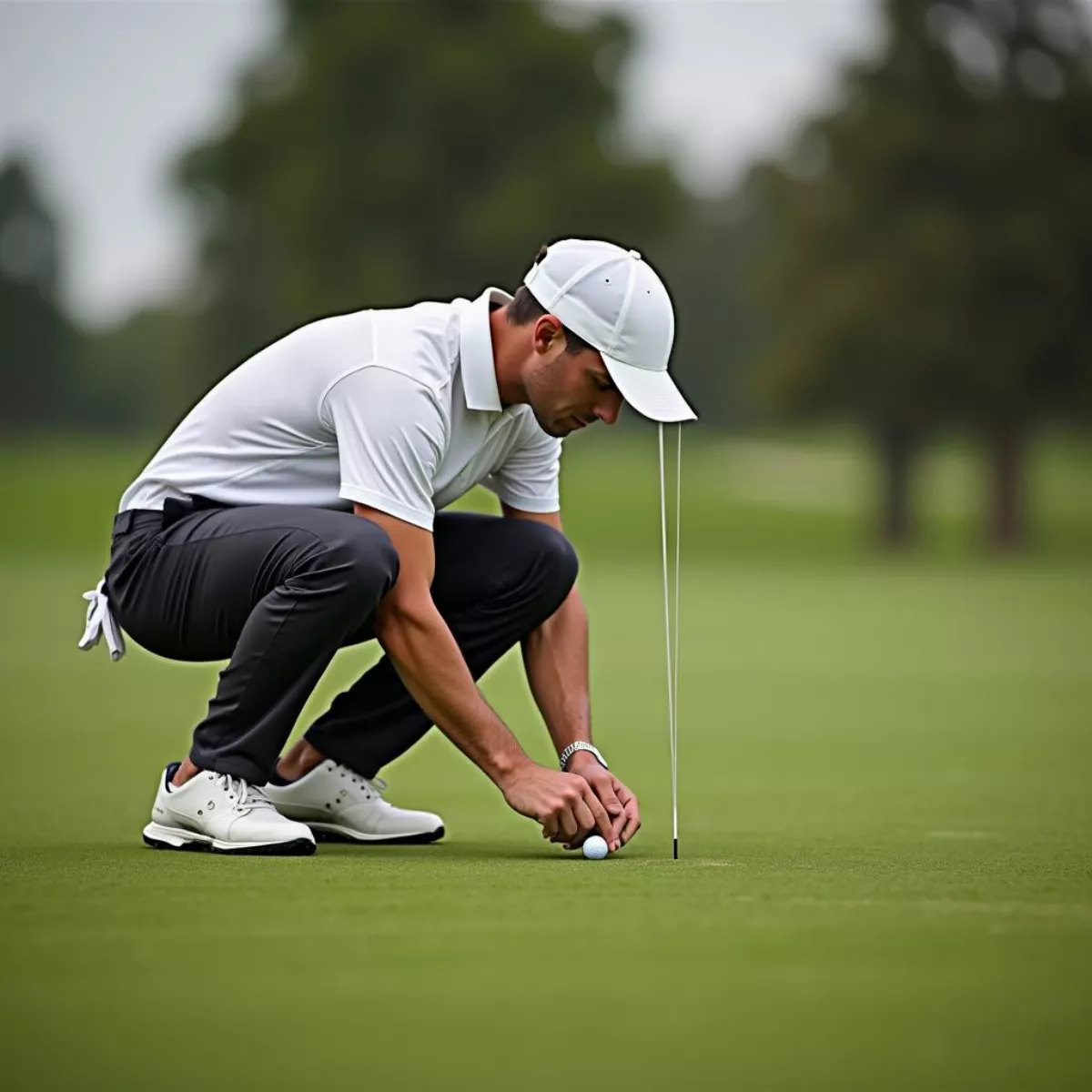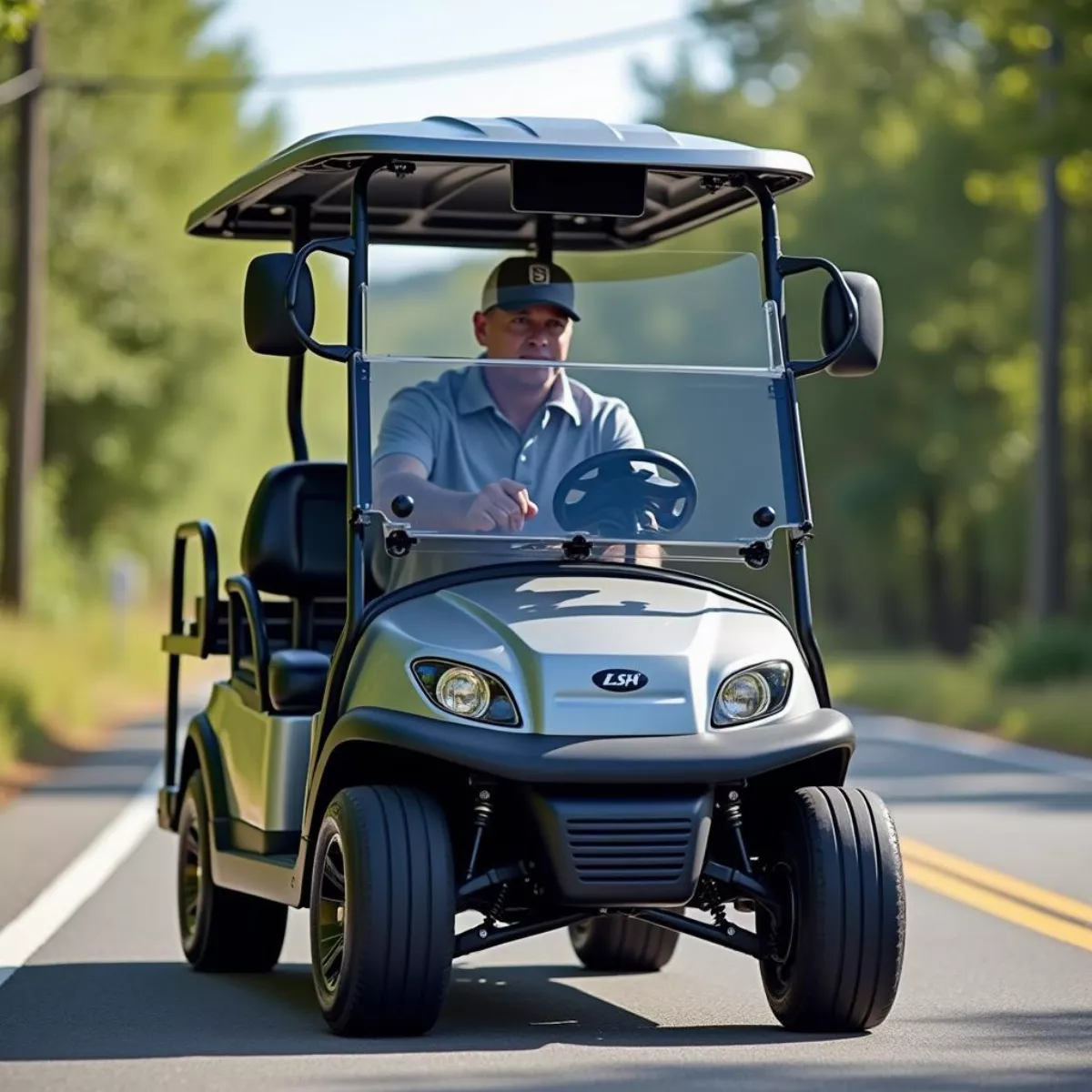Golf is a sport that combines precision, skill, and style. For professional golfers like Rory McIlroy, the right equipment plays a significant role in their performance. One often-overlooked part of this equation is the golf shoe. In this article, we’ll take a closer look at what golf shoes Rory McIlroy wears, why they are essential to his game, and how you can choose the right pair for yourself.
The Importance of Golf Shoes
Before diving into Rory McIlroy’s shoe selection, let’s talk about why golf shoes are crucial for every golfer:
- Stability: Shoes with proper traction help stabilize your swing.
- Comfort: Well-fitted shoes can reduce fatigue during a round.
- Weather Protection: Waterproof options keep your feet dry in adverse conditions.
- Style: Golf shoes come in a variety of designs, allowing you to showcase your personal style on the course.
 Rory McIlroy swinging a golf club
Rory McIlroy swinging a golf club
Rory McIlroy’s Golf Shoe Selection
Brand Partnership
As of 2023, Rory McIlroy has been a long-time ambassador for Nike Golf. Nike’s reputation for innovation in athletic wear extends to their golf shoes, which feature cutting-edge technology designed for performance and comfort.
Signature Model: Nike Air Zoom Infinity Tour
One of the models you’ll see McIlroy wearing frequently is the Nike Air Zoom Infinity Tour. This shoe is specifically designed for golfers, featuring:
- Zoom Air technology: This provides responsive cushioning.
- Stable traction: Ensures grip during swings, regardless of the terrain.
- Waterproof upper: Keeps your feet dry in all conditions.
 Nike Air Zoom Infinity Tour Golf Shoes
Nike Air Zoom Infinity Tour Golf Shoes
Performance Enhancements
The Air Zoom Infinity Tour also includes the following innovative features:
- Dynamic Fit collar: For a snug, lockdown fit that doesn’t compromise flexibility.
- Integrated traction pattern: Enhances grip with every step and swing.
Quote: “Golf shoes are an extension of your performance. Every little detail counts when you’re on the course.” – Rory McIlroy
Spikes vs. Spikeless
Rory has often been spotted in spikeless shoes, which provide versatility, allowing him to transition from the golf course to social settings seamlessly. Spikeless models like the Nike Air Zoom Infinity Tour give better comfort and playability while maintaining stability.
Personal Preferences
Although McIlroy often showcases the latest in Nike technology, he also has personal preferences that resonate with his style. His choice of colors and designs usually reflect a mix of classic and modern aesthetics, appealing to fans.
 Rory McIlroy walking on a golf course
Rory McIlroy walking on a golf course
Choosing the Right Golf Shoes for You
Now that we know what Rory McIlroy wears, how can you choose the right golf shoes for yourself? Here are some tips:
Key Features to Consider
| Feature | Description |
|---|---|
| Fit | Ensure it is snug but not overly tight. |
| Cushioning | Choose a shoe with adequate cushioning for comfort. |
| Traction | Select a shoe type based on the course conditions. |
| Waterproof | If you play in wet conditions, opt for waterproof options. |
| Style | Pick a design that reflects your personal style. |
Tips for Trying Golf Shoes
- Try before you buy: Always test golf shoes on the course if possible.
- Walk around: Make sure you feel comfortable walking and swinging.
- Bring your socks: Wear the socks you intend to wear on the course for the best fit.
Key Advantages of Nike Golf Shoes
- Innovative Technology: Nike consistently integrates the latest tech into their products.
- Wide Variety: They offer an array of styles and colors.
- Comfort and Support: Known for their excellent cushioning and ergonomic designs.
 Different Styles of Nike Golf Shoes
Different Styles of Nike Golf Shoes
Key Takeaways
- Rory McIlroy primarily wears Nike Golf shoes, particularly the Air Zoom Infinity Tour model.
- Golf shoes are crucial for stability, comfort, and performance.
- Key features like fit, traction, and style should guide your purchasing decision.
Frequently Asked Questions (FAQ)
-
What model of golf shoes does Rory McIlroy wear?
- Rory McIlroy frequently wears the Nike Air Zoom Infinity Tour.
-
Why are golf shoes important?
- Golf shoes provide stability, comfort, and protection from the elements, which can enhance performance.
-
Are spikeless golf shoes better?
- Spikeless shoes offer versatility and comfort, making them a popular choice among modern golfers.
-
Can I wear regular shoes for golf?
- While you can wear regular shoes, golf shoes are designed for optimum performance and are recommended.
-
How do I choose the right golf shoes?
- Look for shoes that fit well, offer cushioning, provide good traction, and suit your style.
-
Are Nike golf shoes suitable for wider feet?
- Nike offers various options, but checking the specific model’s fit is crucial, especially if you have wider feet.
-
Do professional golfers only wear expensive shoes?
- While many do prefer high-end brands for performance, there are budget-friendly options that offer good quality.
-
Should I choose waterproof golf shoes?
- If you play often in wet weather, waterproof shoes are highly recommended.
-
How often should I replace my golf shoes?
- It depends on frequency of play, but it’s a good idea to replace them when you notice significant wear or discomfort.
-
Can I find Rory’s shoes in different colors?
- Yes, Nike offers various colorways for the Air Zoom Infinity Tour to suit different preferences.
Conclusion
Choosing the right golf shoes can significantly impact your performance on the course, and looking at how a champion like Rory McIlroy selects his footwear provides valuable insights. With advanced technology, comfortable designs, and a stylish appearance, Nike golf shoes help players like McIlroy perform at their best.
Now that you know what shoes to look for—whether inspired by Rory or based on your own needs—get ready to hit the course in confidence!

 Professional Golf Club Fitting Session
Professional Golf Club Fitting Session Golfer Teeing Off with Driver
Golfer Teeing Off with Driver
 Golfers on a golf course
Golfers on a golf course Screenshot of a golf booking app
Screenshot of a golf booking app
 Group of Golfers Celebrating on Course
Group of Golfers Celebrating on Course Golfer Checking Scorecard on Course
Golfer Checking Scorecard on Course
 Golfer Taking a Swing
Golfer Taking a Swing
 Modern Luxury Villa in Baker's Bay
Modern Luxury Villa in Baker's Bay Beachfront Dining in Baker's Bay
Beachfront Dining in Baker's Bay
 Golfer Wearing Puma Ignite Pwradapt
Golfer Wearing Puma Ignite Pwradapt Puma Ignite Pwradapt Different Colors
Puma Ignite Pwradapt Different Colors
 Golfers reviewing scorecard during a game
Golfers reviewing scorecard during a game Golfer placing marker behind ball on green
Golfer placing marker behind ball on green
 Family Using an LSV Golf Cart
Family Using an LSV Golf Cart Variety of LSV Golf Carts
Variety of LSV Golf Carts
 Golf tournament leaderboard
Golf tournament leaderboard Close-up of a golfer's swing
Close-up of a golfer's swing